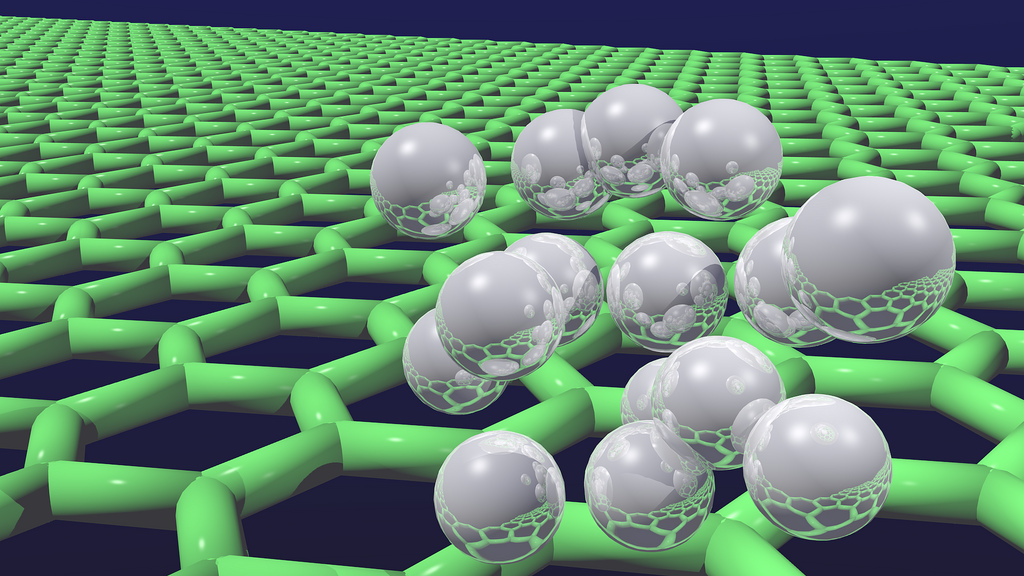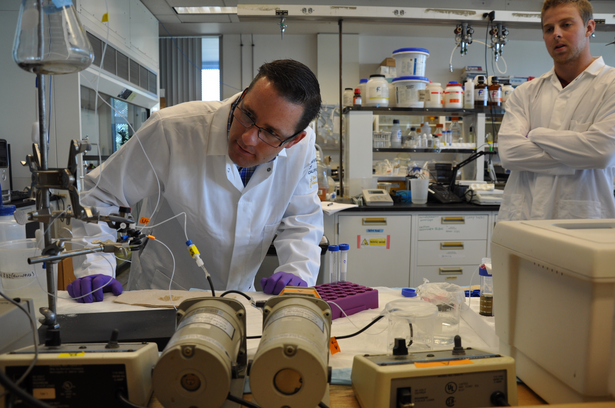Graphene not all good – transport of graphene oxide nanoparticles in water

In a first-of-its-kind study of how a super material some think could transform the electronics industry moves in water, researchers at the University of California, Riverside Bourns College of Engineering found graphene oxide nanoparticles are very mobile in lakes or streams and therefore likely to cause negative environmental impacts if released.
Graphene oxide nanoparticles are an oxidized form of graphene, a single layer of carbon atoms prized for its strength, conductivity and flexibility. The use of graphene and other carbon-based nanomaterials, such as carbon nanotubes, are growing rapidly. At the same time, recent studies have suggested graphene oxide may be toxic to humans.
As production of these nanomaterials increase, it is important for regulators, such as the Environmental Protection Agency, to understand their potential environmental impacts, said Jacob D. Lanphere, a UC Riverside graduate student who co-authored a just-published paper about graphene oxide nanoparticles transport in ground and surface water environments.
Potential graphene applications include lightweight, thin, flexible, yet durable display screens, electric circuits, and solar cells, as well as various medical, chemical and industrial processes enhanced or enabled by the use of new graphene materials. (1)

Jacob D. Lanphere, left, and Corey Luth, work in the lab of their advisor Sharon Walker. Image credit: UCR
“The situation today is similar to where we were with chemicals and pharmaceuticals 30 years ago,” Lanphere said. “We just don’t know much about what happens when these engineered nanomaterials get into the ground or water. So we have to be proactive so we have the data available to promote sustainable applications of this technology in the future.”
The paper co-authored by Lanphere, “Stability and Transport of Graphene Oxide Nanoparticles in Groundwater and Surface Water,” was published in a special issue of the journal Environmental Engineering Science.
Other authors were: Sharon L. Walker, an associate professor and the John Babbage Chair in Environmental Engineering at UC Riverside; Brandon Rogers and Corey Luth, both undergraduate students working in Walker’s lab; and Carl H. Bolster, a research hydrologist with the U.S. Department of Agriculture in Bowling Green, Ky.
Walker’s lab is one of only a few in the country studying the environmental impact of graphene oxide. The research that led to the Environmental Engineering Science paper focused on understanding graphene oxide nanoparticles’ stability, or how well they hold together, and movement in groundwater versus surface water.
The researchers found significant differences.
In groundwater, which typically has a higher degree of hardness and a lower concentration of natural organic matter, the graphene oxide nanoparticles tended to become less stable and eventually settle out or be removed in subsurface environments.
In surface waters, where there is more organic material and less hardness, the nanoparticles remained stable and moved farther, especially in the subsurface layers of the water bodies.
The researchers also found that graphene oxide nanoparticles, despite being nearly flat, as opposed to spherical, like many other engineered nanoparticles, follow the same theories of stability and transport.
Source: University of California, Riverside
Featured image: Quantum Hydrogen on Graphene by http://www.flickr.com/photos/93636241@N07/8536981794

Commenting rules and guidelines
We value the thoughts and opinions of our readers and welcome healthy discussions on our website. In order to maintain a respectful and positive community, we ask that all commenters follow these rules:
We reserve the right to remove any comments that violate these rules. By commenting on our website, you agree to abide by these guidelines. Thank you for helping to create a positive and welcoming environment for all.